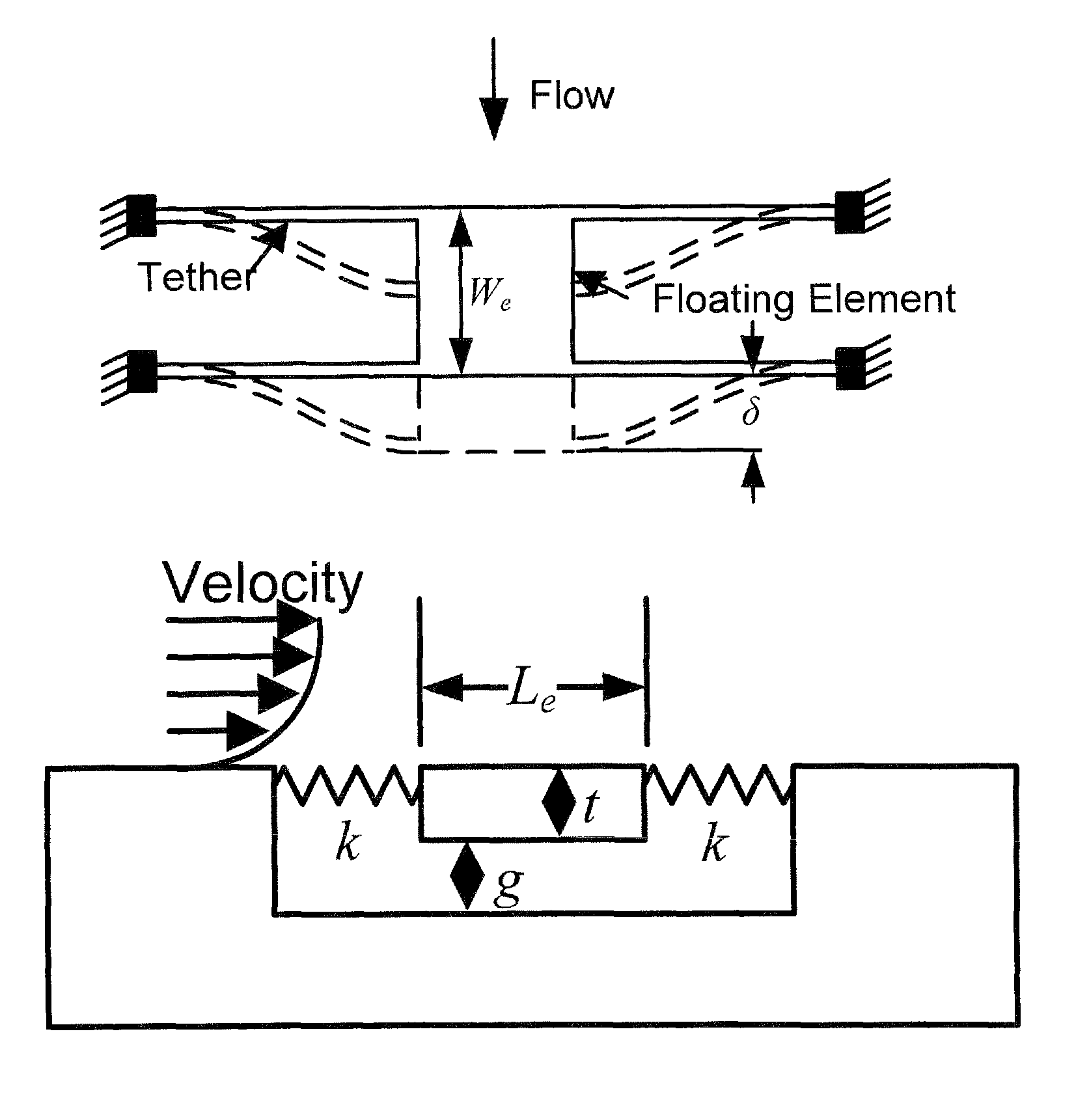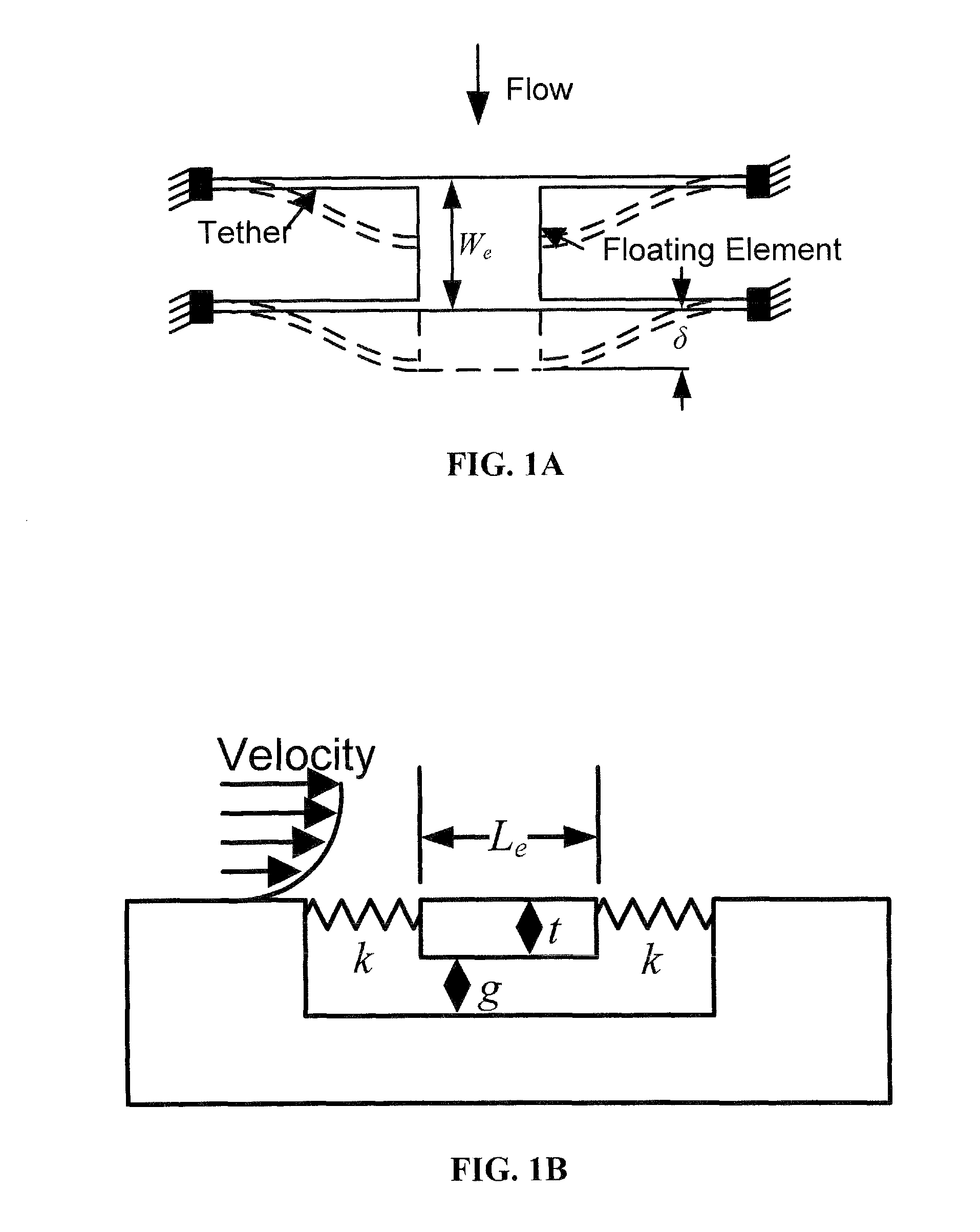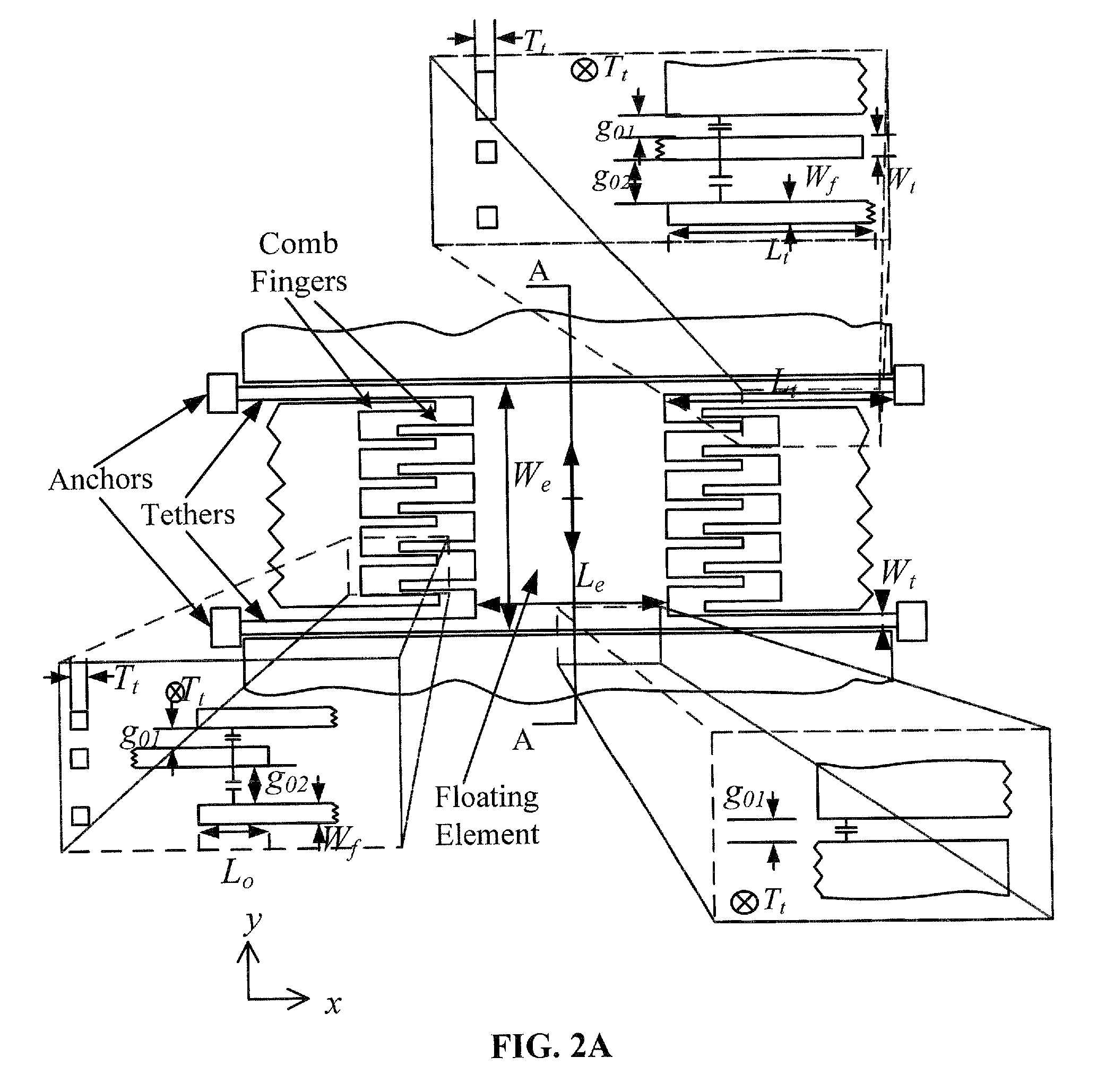Structure and fabrication of a microscale flow-rate/skin friction sensor
a micro-scale flow-rate/skin friction sensor technology, applied in the direction of force measurement, printed circuit manufacturing, instruments, etc., can solve the problems of low efficiency, inability to direct the measurement of fluctuating shear stress, time-consuming, and increase fuel consumption, so as to improve efficiency and reduce fabrication cost and time. , the effect of improving efficiency
- Summary
- Abstract
- Description
- Claims
- Application Information
AI Technical Summary
Benefits of technology
Problems solved by technology
Method used
Image
Examples
Embodiment Construction
[0038]Embodiments of the present invention provide a flow-rate / skin friction / shear stress sensor. In one embodiment, the shear stress sensor can be a MEMS-based floating element shear stress sensor. In a further embodiment, the floating element shear stress sensor can utilize a differential capacitive transduction scheme.
[0039]FIGS. 1A and 1B show schematic representations of a floating element sensor. Referring to FIG. 1A, tethers serve as restoring springs. In addition, the shear stress deflects the floating element laterally while a displacement transducer provides a desired output. A number of transduction options are available, including capacitive, optical, piezoresistive, and piezoelectric.
[0040]According to embodiments of the present invention, the sensor structure can include interdigitated variable-gap capacitive comb fingers on a floating element. The interdigitated variable-gap capacitive comb fingers can produce an electrical output proportional to the deflection due to...
PUM
| Property | Measurement | Unit |
|---|---|---|
| frequency response | aaaaa | aaaaa |
| bias voltages | aaaaa | aaaaa |
| bias voltages | aaaaa | aaaaa |
Abstract
Description
Claims
Application Information
 Login to View More
Login to View More - R&D
- Intellectual Property
- Life Sciences
- Materials
- Tech Scout
- Unparalleled Data Quality
- Higher Quality Content
- 60% Fewer Hallucinations
Browse by: Latest US Patents, China's latest patents, Technical Efficacy Thesaurus, Application Domain, Technology Topic, Popular Technical Reports.
© 2025 PatSnap. All rights reserved.Legal|Privacy policy|Modern Slavery Act Transparency Statement|Sitemap|About US| Contact US: help@patsnap.com



